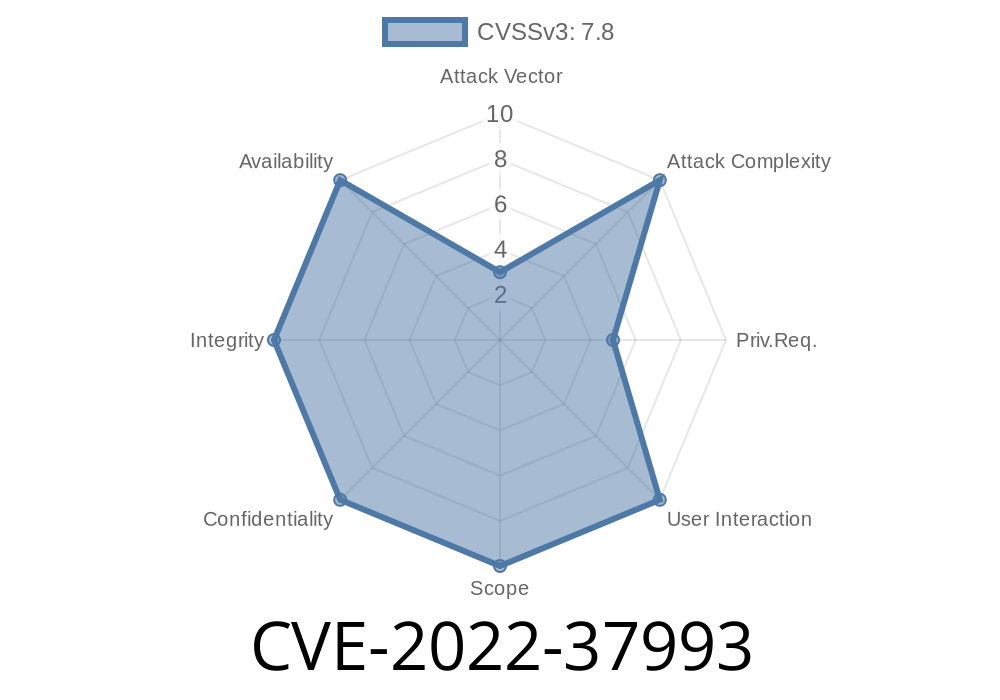CVE-2022-37993 is a critical security vulnerability in the Windows Group Policy Preference Client that could allow an attacker to execute privileged operations on a target machine by exploiting a failure to properly handle the Group Policy Object (GPO) XML files.
This vulnerability is distinct from CVE-2022-37994 and CVE-2022-37999, which are also related to the Windows Group Policy Preference Client but have separate attack vectors and impact. In this long-read post, we'll take a closer look at the CVE-2022-37993 vulnerability, how it can be exploited, and what you should do to defend against potential attacks.
A Brief on Windows Group Policy Preferences
Group Policy Preferences (GPP) is a Windows feature that allows administrators to implement and enforce policy configurations within an Active Directory domain environment. GPP extends the functionality of Group Policy by enabling administrators to define and control advanced settings for clients and servers using the Group Policy Management Console (GPMC) and the Group Policy Management Editor (GPME).
The Vulnerability (CVE-2022-37993)
An elevation of privilege vulnerability exists in the way the Windows Group Policy Preference Client processes the GPO XML files. This vulnerability (CVE-2022-37993) occurs when the GPP Client fails to prevent an attacker from modifying the GPO XML files and executing privileged operations on the target machine.
The following code snippet demonstrates how an attacker could potentially exploit the vulnerability
// Create a new GPO XML file
CreateFile(“<TARGET_NAME>.xml”, GENERIC_WRITE, , NULL, CREATE_ALWAYS, FILE_ATTRIBUTE_NORMAL, NULL);
// Modify the GPO XML file with privileged settings
WriteFile(“<TARGET_NAME>.xml”, "<Privileged_Settings>", strlen("<Privileged_Settings>"), &dwBytesWritten, NULL);
// Trigger the Windows Group Policy Preference Client to process the GPO XML file
DWORD nExitCode = ;
STARTUPINFO si;
PROCESS_INFORMATION pi;
ZeroMemory(&si, sizeof(si));
si.cb = sizeof(si);
ZeroMemory(&pi, sizeof(pi));
CreateProcess(NULL, "<Windows_GPP_Client_Process> <TARGET_NAME>.xml", NULL, NULL, FALSE, , NULL, NULL, &si, &pi);
Once the XML file containing the malicious privileged settings is processed by the vulnerable GPP Client, the attacker can execute these operations with elevated privileges, potentially compromising the system's security.
Microsoft released a security advisory for this vulnerability, which can be found here
Microsoft Security Advisory CVE-2022-37993
The Common Vulnerabilities and Exposures (CVE) entry for this issue can be found at
To defend against this vulnerability, the following mitigations and best practices are recommended
1. Apply security updates provided by Microsoft for this vulnerability as soon as possible. Details of the updates can be found in the security advisory.
2. Control access to GPO XML files using the principle of least privilege. Limit write access to sensitive GPO files to only authorized administrators.
Regularly monitor and review GPO configurations and settings for signs of unauthorized changes.
4. Implement the principle of least privilege throughout your entire organization, ensuring that users are given only necessary access and permissions for their job responsibilities.
Conclusion
CVE-2022-37993 is a serious security issue that could allow attackers to execute privileged operations on a target machine by exploiting a vulnerability in the Windows Group Policy Preference Client. By understanding the mechanics behind this vulnerability and implementing proper security measures, you can actively defend against potential attacks and safeguard the security of your Windows environment.
Timeline
Published on: 10/11/2022 19:15:00 UTC
Last modified on: 10/12/2022 14:47:00 UTC
